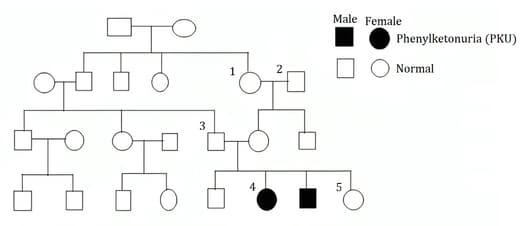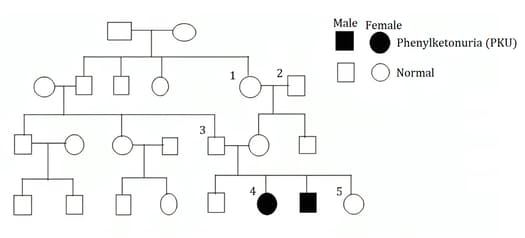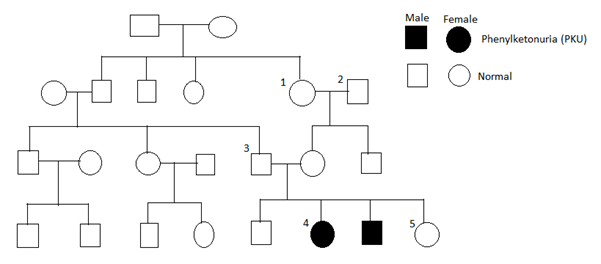Mary Jones and Geoff Jones Solutions for Chapter: Inheritance, Exercise 3: Exercise 16.3
Mary Jones Biology Solutions for Exercise - Mary Jones and Geoff Jones Solutions for Chapter: Inheritance, Exercise 3: Exercise 16.3
Attempt the free practice questions on Chapter 16: Inheritance, Exercise 3: Exercise 16.3 with hints and solutions to strengthen your understanding. Biology for Cambridge IGCSE Workbook 4 th Edition Digital Access solutions are prepared by Experienced Embibe Experts.
Questions from Mary Jones and Geoff Jones Solutions for Chapter: Inheritance, Exercise 3: Exercise 16.3 with Hints & Solutions
The family tree (pedigree) in figure 16.3 shows the incidence of a genetic disease called phenylketonuria (PKU) in four generations of a family.

Describe one piece of evidence from the diagram that suggests PKU is caused by a recessive allele.
The family tree (pedigree) in figure 16.3 shows the incidence of a genetic disease called phenylketonuria (PKU) in four generations of a family.

If PKU is caused by a recessive allele, explain why it is unlikely that this allele first appeared in person 4.
The family tree (pedigree) in figure 16.3 shows the incidence of a genetic disease called phenylketonuria (PKU) in four generations of a family.

In the space below, deduce the possible genotypes of person 1, 2, 3 and 4. Use the symbol q for the PKU allele and the symbol Q for the normal allele.
The family tree (pedigree) in figure 16.3 shows the incidence of a genetic disease called phenylketonuria (PKU) in four generations of a family.

Person 5 is worried that her children might have PKU. She talks to a genetic counsellor. What might she be told?
